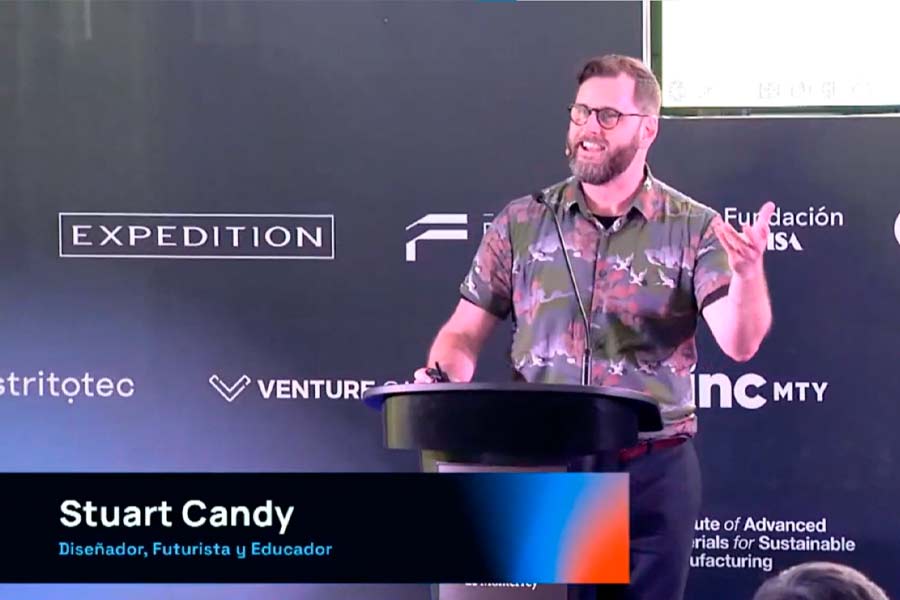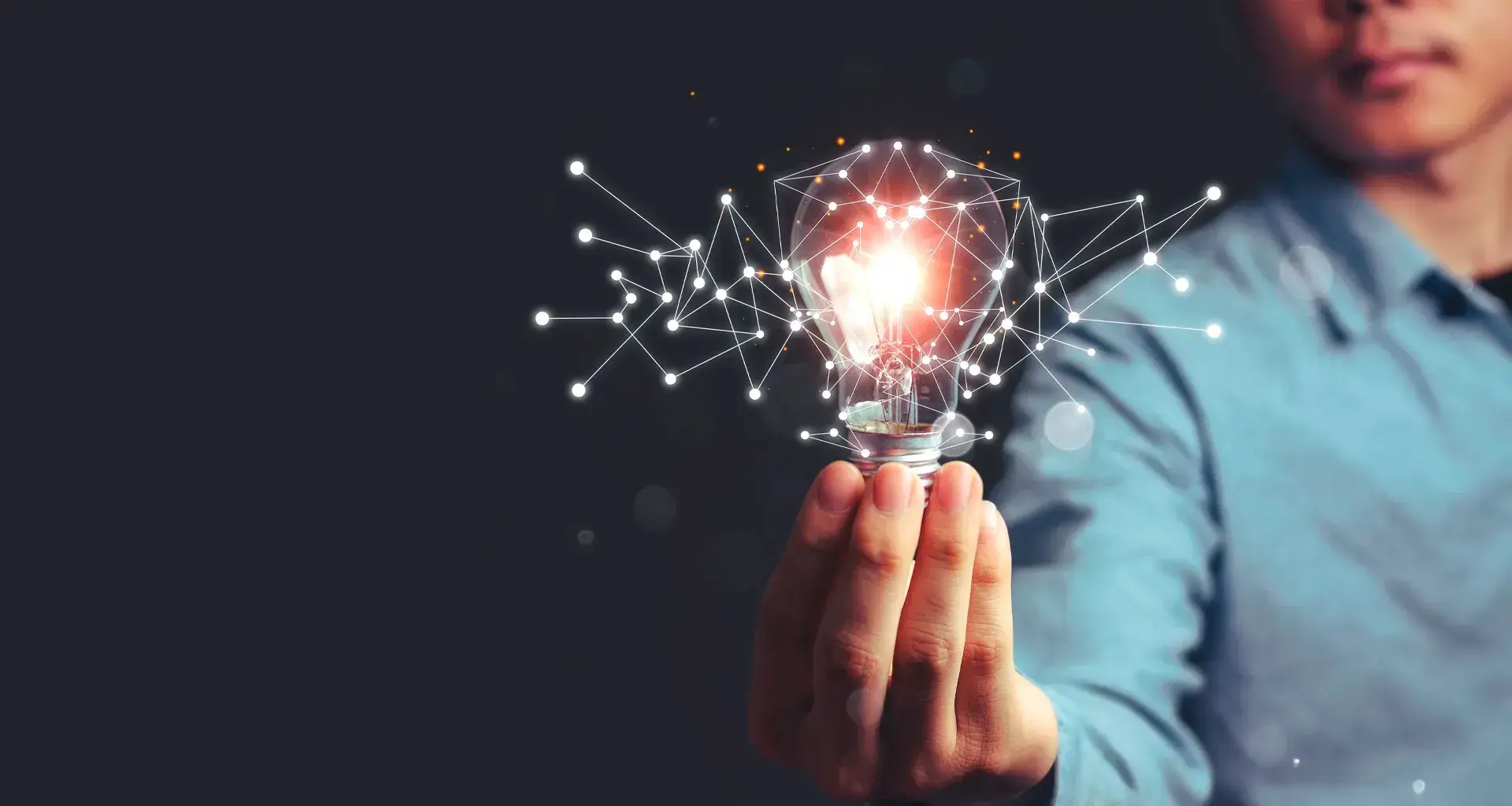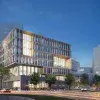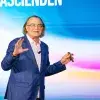How can we be ready for one or more futures? Is there a way to design predictions for tomorrow’s challenges?
Stuart Candy, designer, futurist, and Associate Professor of Social Foresight at Parsons School of Design, shared concepts for designing scenarios with possible futures based on thoughts and reflections about the present.
“The goal of studying those futures is not to predict consequences in a singular way, but to consider them and visualize the paths ahead in a more systematic and creative way,” Dr. Candy said.
Candy, who is also director of the Situation Lab and member of the World Futures Studies Federation and The Long Now Foundation, participated in the event “The Next Decade: Water Disruption 2023” at Tec de Monterrey.

Understanding change by thinking about the future
The Australian futurist’s keynote was titled ‘Designing Futures: Experimenting Realities Yet to Unfold.’
Candy said that although this has been around for a long time, it became important during the pandemic to systematically think about things that have not yet happened and the need for and possibility of preparing for different events.
“Foresight is a transdisciplinary field that has emerged to meet the need for a more systematic consideration of how change might unfold,” he explained.
The professor said that it is not about predicting the future, but about designing, developing, and using alternative futures to solve problems and take advantage of opportunities that lie ahead.
He said that when people design something, they hope they have the right idea of the future because they are creating fragments of it. So, he points out that design and futures have a connection with each other, which allows each of them to develop freely.
“Futures deal with typically longer timeframes than we think of in our daily lives. They involve greater uncertainties, more openness, and greater fluidity,” he said.
“Our systems, the way they’re set up, are sorts of designed fragments of futures,” he added.

The three areas of foresight
Dr. Candy shared three areas of foresight, which can be seen as distinct facets of the human ability to think about things that have not yet happened or the ability to foresee.
According to the futurologist, the areas for reflecting on things that have not been developed or events that have not yet occurred are:
- Area 1: Difference
Candy said that the beginning of all future thinking involves acknowledging that the future context is not identical to the present and that the only thing we know about the future is that it will be different. It is another place.
“As time goes on, all things change at different rates, so we’ll find ourselves in different circumstances than what we have now or have gotten used to,” he said.
“One way to recognize this is through understanding the inevitability of change; everything that exists did not at one time, and everything that exists will one day no longer exist, and that applies to everything,” he remarked.
According to Dr. Candy, everything -from the microscopic to the geological- is changing, which is why he thinks it important to ask, ‘How could the future context become different from the current context?’
He said that answers to that question can come from a practice known as horizon scanning, to detect changes and differences that may arise from emerging trends or issues.
- Area 2: Diversity
According to Dr. Candy, a single image of the future, no matter how striking, is incomplete.
“We must understand that the world is always in the process of becoming different from the way it is now, but having a single theory of change isn’t enough; if we had only one theory of change, it would be a very fragile way to approach the future,” he said.
This speaker pointed out that having expectations as a linear extrapolation of what we see happening right now can lead to them being constantly dashed.
“The future may seem more like a landscape of possibilities that includes greater uncertainty the farther in time one tries to cast one’s gaze. So, how can we make sense of that plurality?” he asked.
“You can start to divide up those possible worlds based on the kind of future they describe, a subset of the possible and the preferable always being logically necessary,” he added.
In this case, the futurologist mentions that it is possible to foresee multiple ramifications leading to the design of several scenarios that contemplate a multiplicity of possible futures.
“It’s important to make a map in order to track a variety of alternative futures on an ongoing basis to keep up with change; it’s thinking about those differences from the present in a variety of ways,” he added.
“Our systems, the way they’re set up, are sorts of designed fragments of futures.”
- Area 3: Depth
The speaker pointed out that it is possible to use past experiences to navigate change, as people use the same part of the brain when they think about the past and try to think about the future.
“In a way, we’re doomed to imagining only with the materials of the experience we’ve had,” he said.
“That’s not to say we can’t have novel thoughts, but neither are they circumscribed; when we’re thinking about things that haven’t happened yet, we’re drawing on our pool of past experiences,” he added.
Dr. Candy noted that this premise implies there is no way to foresee future experiences; however, he also said that it is possible to have access to many rich experiences and possible futures.
“Culture, history, cartoons, comic books, political speeches, economic statistics, society, etc. all shape the images of the future,” Stuart said.
“Images of the future can take many forms, but all these richly imagined futures are there for us to encounter and think about, to be alarmed by or be inspired by,” Stuart added.
In order to foresee possible futures, Dr. Candy suggests aiming to experience them before they happen, by articulating future possibilities in the abstract, to understand and imagine them.
“We can try to deal with what it would be like to inhabit those futures versus what they would look like statistically or conceptually; we must try not only to think but also to feel our way into these future conditions,” he added.

Synergy between design and futures
Having a variety of different and intellectually diverse futures is not enough, Dr. Candy said, adding that we need to find ways for them to impact the assessment of what needs to be done to prepare for them.
“How do we prepare our imagination to think and feel things we haven’t experienced before?” the speaker asked.
He shared that to do so, he has worked on projects that aim to generate answers to possible futures throughout his career, with strategies, mechanisms, and even games with which people experiment to find possible solutions.
One of these strategies is a room he called “Time Machine” where they placed fragments of the future, as physical objects that he designed to generate immersive scenarios.
“You don’t need a big budget to create a room of the future if you have a whole world to play with,” he said.
“There’s a vast design space here for all these types of interactions that you can bring to life once you start thinking in terms of future worlds that can be created to discuss in the present,” he added.
Dr. Candy highlighted Tec de Monterrey’s efforts to develop innovation capabilities for anticipating different changes through spaces such as the Futures Design Lab at the School of Architecture, Art, and Design.
“The purpose is to equip our bodies and minds with the conditions that allow us to address these three areas of future thinking so that they are different, diverse, and deep enough to impact how we make decisions today,” he concluded.
The Next Decade: Water Disruption 2023
Tec de Monterrey held The Next Decade event for the first time, which included activities such as lectures, workshops, and immersive experiences with the participation of speakers and experts in science and innovation.
The Next Decade: Water Disruption 2023 event was held to mark the Tec’s 80th anniversary and as part of the vision of the Lead the Expedition Way program, with activities centered around the water crisis.
“Solutions to humanity’s complex problems can only be solved if we do it in a collaborative way,” said Hugo Garza, Vice President of Strategy at Tecnológico de Monterrey, in his opening remarks.
In addition to Dr. Stuart Candy’s keynote speech, the Aquafest workshop was given by Valentina de Mateo, a specialist in the development of innovation processes, as well as a webinar with researchers from Cranfield University and UNAM.
The event was held on-site at the Monterrey campus on June 7 and 8; in addition, several activities and keynote speeches were broadcast virtually through the live.tec.mx platform.
ALSO READ:





